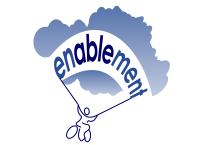Learning Through Play with Cerebral Palsy
Top Contributors - Michelle Lee, Kim Jackson, Shaimaa Eldib, Laura Ritchie, Naomi O'Reilly, Admin, Rachael Lowe, Simisola Ajeyalemi, Jess Bell and Olajumoke Ogunleye
Introduction [edit | edit source]
The information on this page has developed for you from the expert work of Roelie Wolting alongside the Enablement Cerebral Palsy Project and Handicap International Group.
Learning Through Play [edit | edit source]
Play is an important part of any child's development. It is an activity that makes a child/person happy and is enjoyable so that they want to do it again. Play is one of the most important ways that children develop mentally, socially and physically. It gives a chance for a child to practice doing activities in their own way so that the child can be successful, as the child grows the way of playing changes. The sequence in which play develops is the same for all children, whatever their abilities or handicaps.
Sequence of Play[edit | edit source]
Here are the sequences of play:
- Playing alone (till 1 year): At first the child will play with his body and then will gradually begin to reach out to things he sees nearby and play with them. She will not be interested in other children or anything they are doing but she will like other people playing with him/her.
- Watching others play (1,5 -2 years): The child will stop with what she is doing and watch other children who are playing nearby. But she will not join them in their activities. She likes to repeat things many many times.
- Playing next to others but not with other children (2-3 years): From a distance it can look as if they are playing together, but in fact there is no direct communicationg between the children and they are all playing their own games. The child will hate to share toys with others.









